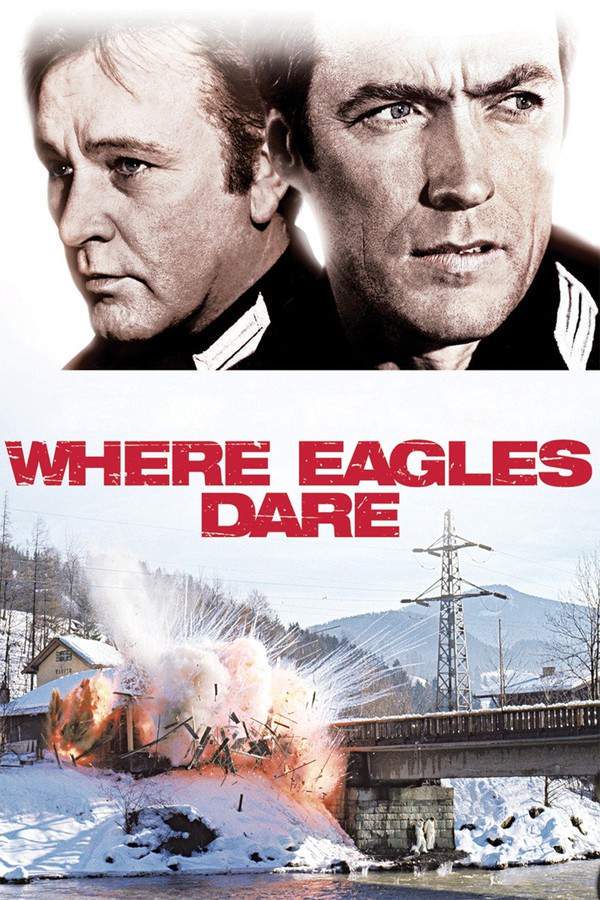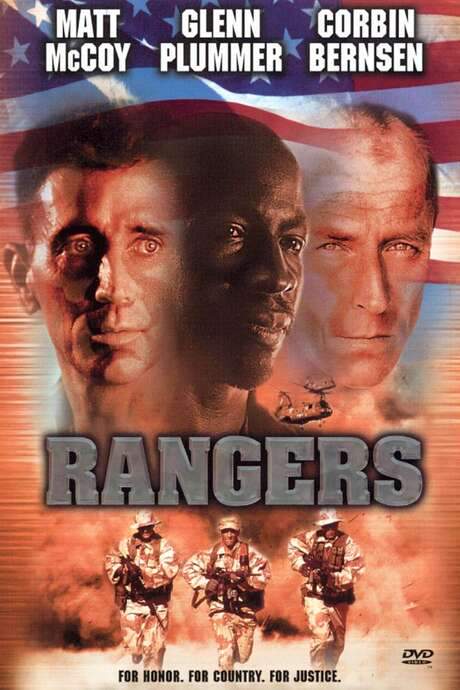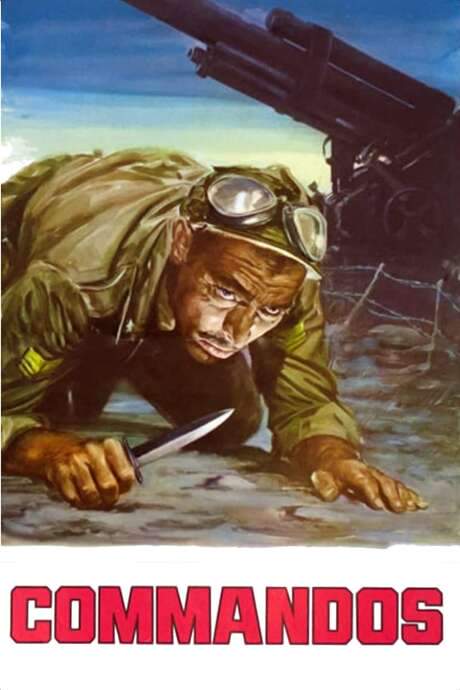
Darby’s Rangers
Year: 1958
Runtime: 121 mins
Language: English
Director: William A. Wellman
Stationed in Scotland, Maj. William Darby trains his men with British commandos, forming the U.S. Army’s Ranger battalion. Amid drills they court local women before deploying to fight the Nazis. The Rangers fight from French‑North Africa to Italy, and when a surprise assault destroys the 1st and 3rd Battalions at the Battle of Cisterna, Darby’s 4th Battalion rushes to their aid.
Warning: spoilers below!
Haven’t seen Darby’s Rangers yet? This summary contains major spoilers. Bookmark the page, watch the movie, and come back for the full breakdown. If you're ready, scroll on and relive the story!
Darby’s Rangers (1958) – Full Plot Summary & Ending Explained
Read the complete plot breakdown of Darby’s Rangers (1958), including all key story events, major twists, and the ending explained in detail. Discover what really happened—and what it all means.
In the spring of 1942, the United States Army decides to form an elite strike force modeled after the celebrated British Commandos. Led by Major Darby, James Garner, a former staff officer, the 1st Ranger Battalion is created on June 19, 1942. He and Master Sergeant Saul Rosen, Jack Warden, the narrator of the story, recruit a diverse company of men who train under seasoned Commando units in Dundee, Scotland. Darby instills in his recruits a bold conviction: the Commandos are the best soldiers in the world, and given time, the Rangers will earn that distinction for themselves.
The American trainees live in Scottish homes, and the bonds they form off the battlefield begin to matter almost as much as the drills they endure. The unit’s training pairs off several Rangers with local women: Rollo Burns, Peter Brown, with Peggy McTavish, [Venetia Stevenson](/actor/venetia-stevenson, the daughter of the imposing yet good-humored Scottish Commando instructor Sergeant McTavish; and Hank Bishop, Stuart Whitman, with the prim and proper Wendy Hollister, Joan Elan. These relationships add human warmth to a program built on grit, discipline, and hard-won tactics, reminding the men that courage also includes loyalty, tenderness, and restraint.
As combat readiness builds, the Rangers prove their value in real-world campaigns. They contribute to Operation Torch, the Allied invasion of French North Africa, and the battle-tested unit expands with two more battalions. Darby earns a promotion to colonel, a testament to his decisive leadership and willingness to blend rigorous standards with an understanding of his men’s needs. The Rangers’ creed—tough, flexible, and lethal when needed—begins to define their identity, even as the bond between commander and troops grows more intricate.
Joining the Rangers is Second Lieutenant Arnold Dittmann, Edd Byrnes, a fresh West Pointer who approaches combat with a strict, by-the-book mindset. His strictures and quick learning put him at odds with some veterans, but his commitment to duty becomes an asset as the Rangers push into heavy, close-quarters fighting. Dittmann’s arc is punctuated by an intense personal connection with Angelina De Lotta, Etchika Choureau, a strong-willed woman whose presence in his life softens the hardness of front-line combat and humanizes him beyond his tactical focus.
The Rangers continue their ascent during the Sicily campaign, where the close-quarters battles demand both nerve and precision. Darby’s unit relies on speed, surprise, and audacious improvisation to outmaneuver opponents in unfamiliar terrain. The personal and professional lines blur as Dittmann grapples with the brutal realities of warfare, and the team’s devotion to one another becomes a lifeline in the chaos of war.
Amid the fires of war, Darby confides a troubling, recurring dream to Rosen: a vision of being struck by a train, a stark symbol of his fear that battle will claim him. The introspective moment underscores the human cost of leadership—how the burden of command weighs on a man who must lead others into peril again and again.
At Anzio, the Rangers, now operating in a broader, multi-battalion context, are deployed to a perilous mission that culminates in the Battle of Cisterna. The operation is costly and devastating: many soldiers do not return, and a heavy toll is taken on the ranks. Rollo Burns, who had pledged to marry Peggy McTavish if he came back alive, is among those who do not make it home. The losses are profound and unforgettable, shaking the Rangers to their core and foreshadowing the fragility of even the most meticulously planned campaigns. Sgt. McTavish, the legendary instructor, is also remembered in this grim chapter, his legacy living on through the veterans who carried his mentorship into the next battles.
In the aftermath of Cisterna, the Rangers are disbanded, their numbers reduced by casualties and strategic realignments. Yet the film follows brief vignettes that keep the human thread alive: Hank Bishop on leave with Wendy Hollister and her family, and Arnold Dittmann reuniting with Angelina De Lotta. These moments of respite serve as a counterbalance to the relentless strain of combat, illustrating how men carry the war with them into moments of quiet and reflection.
As the war progresses, Darby is called to report to Army Headquarters at the Pentagon, while Rosen bids him a final farewell at the Anzio beachhead. The ending scene is a quiet but poignant tableau: Darby walks along the shore toward a landing craft, saluting a new generation of Rangers as their patches catch the sun. The moment is both a victory and a reminder of the enormous human cost behind every tactical triumph. When the boarding ramp rises, the legacy of the Rangers—and the enduring spirit Darby embodied—remains.
A concluding postscript notes that the Rangers’ rugged, hard-hitting methods of training laid the groundwork for the techniques now employed by all fighting units of the United States Army. The film closes with a somber reflection on the cost of war and the ways in which leadership, courage, and ingenuity endure even in the darkest chapters of history.
In the years that followed, Major Darby returned to Italy and was killed in action in 1945, serving with the 10th Mountain Division just days before the war’s end. He was posthumously promoted to the rank of brigadier general, a final acknowledgement of a career defined by grit, strategic insight, and an unwavering commitment to those he led.
Last Updated: October 05, 2025 at 12:43
Unlock the Full Story of Darby’s Rangers
Don't stop at just watching — explore Darby’s Rangers in full detail. From the complete plot summary and scene-by-scene timeline to character breakdowns, thematic analysis, and a deep dive into the ending — every page helps you truly understand what Darby’s Rangers is all about. Plus, discover what's next after the movie.
Darby’s Rangers Timeline
Track the full timeline of Darby’s Rangers with every major event arranged chronologically. Perfect for decoding non-linear storytelling, flashbacks, or parallel narratives with a clear scene-by-scene breakdown.

Similar Movies to Darby’s Rangers
Discover movies like Darby’s Rangers that share similar genres, themes, and storytelling elements. Whether you’re drawn to the atmosphere, character arcs, or plot structure, these curated recommendations will help you explore more films you’ll love.
Explore More About Movie Darby’s Rangers
Darby’s Rangers (1958) Scene-by-Scene Movie Timeline
Darby’s Rangers (1958) Movie Characters, Themes & Settings
Darby’s Rangers (1958) Spoiler-Free Summary & Key Flow
Movies Like Darby’s Rangers – Similar Titles You’ll Enjoy
Where Eagles Dare (1969) Detailed Story Recap
One Ranger (2023) Ending Explained & Film Insights
Rangers (2000) Story Summary & Characters
A Soldier’s Tale (1988) Complete Plot Breakdown
The Devil’s Brigade (1968) Ending Explained & Film Insights
Marine Raiders (1944) Film Overview & Timeline
Major Dundee (1965) Complete Plot Breakdown
Commandos (1968) Complete Plot Breakdown
Desert Commandos (1967) Spoiler-Packed Plot Recap
The Desert Rats (1953) Ending Explained & Film Insights
The Battle of the Damned (1969) Plot Summary & Ending Explained
Play Dirty (1969) Film Overview & Timeline
Dirty Heroes (1967) Movie Recap & Themes
Tell It to the Marines (1926) Spoiler-Packed Plot Recap
Tank Force! (1958) Full Summary & Key Details

















